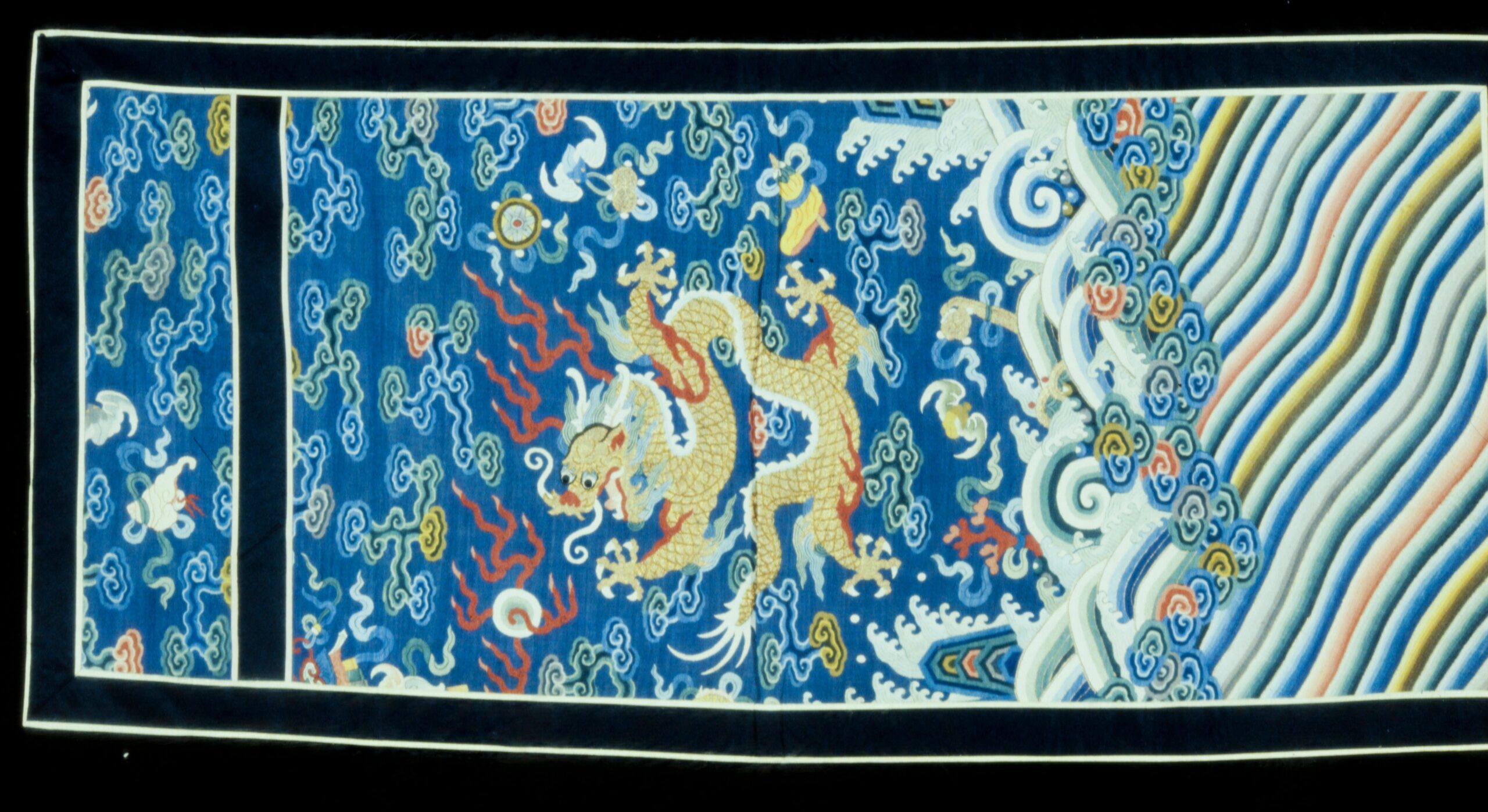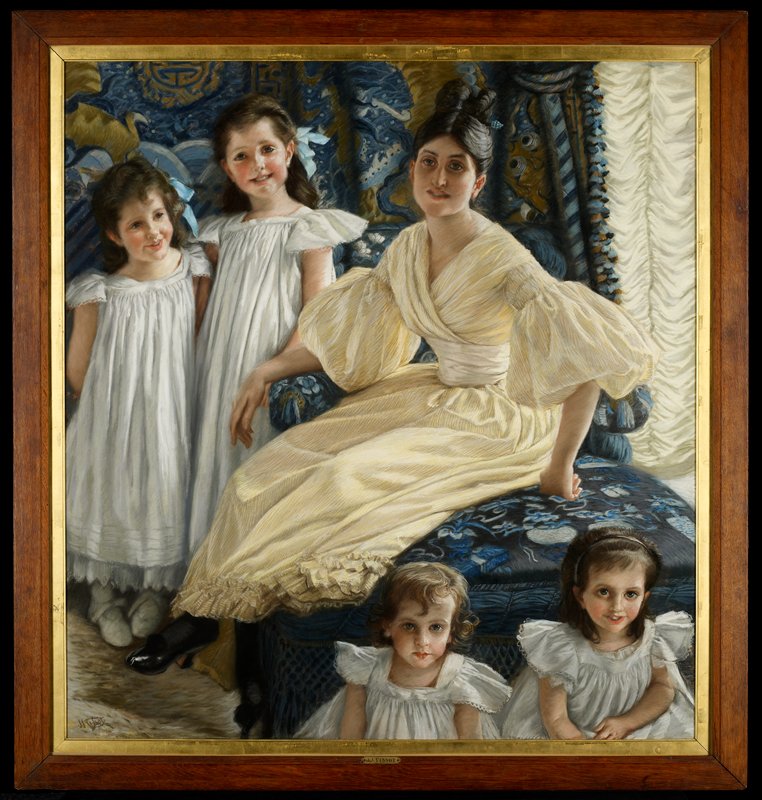Globalization Juxtaposition: Tissot and Chinese Textile
China, Panel

Panel, c. 1735–96
Silk tapestry weave
The John R. Van Derlip Fund 42.8.168
In the pastel at left, the Comtesse d’Yanville has gathered her children in an elite French home dressed top to bottom in Chinese textiles. The wall coverings feature several motifs common to Chinese imperial cloths: the dragon’s eyes to the right of the Comtesse; the dragon’s claw above the stylized waves in the upper left corner; the shou medallion at the top, symbolizing long life. These images also appear in the fine Chinese tapestry panel displayed here.
When this family portrait was created, the French were claiming parts of China and Vietnam, challenging the Chinese imperial authority signified by the dragon. In fact, the home’s chinoiserie interior isn’t merely fashionable—it may be regarded as a private expression of approval for French imperialism in Asia. Interior decorating was largely the domain of female heads of household, and the Comtesse’s choices suggest one way that homemakers—far from military and diplomatic battlefronts—contributed to empire building.
James Tissot

French, 1836–1902
Comtesse d’Yanville and Her Four Children, 1895
Pastel
Gift of Ruth and Bruce Dayton 97.65
In the pastel, the Comtesse d’Yanville has gathered her children in an elite French home dressed top to bottom in Chinese textiles. The wall coverings feature several motifs common to Chinese imperial cloths: the dragon’s eyes to the right of the Comtesse; the dragon’s claw above the stylized waves in the upper left corner; the shou medallion at the top, symbolizing long life. These images also appear in the fine Chinese tapestry panel displayed here.
When this family portrait was created, the French were claiming parts of China and Vietnam, challenging the Chinese imperial authority signified by the dragon. In fact, the home’s chinoiserie interior isn’t merely fashionable—it may be regarded as a private expression of approval for French imperialism in Asia. Interior decorating was largely the domain of female heads of household, and the Comtesse’s choices suggest one way that homemakers—far from military and diplomatic battlefronts—contributed to empire building.
